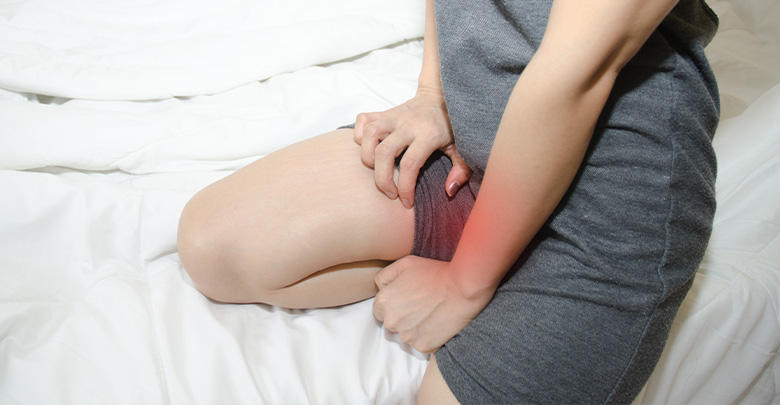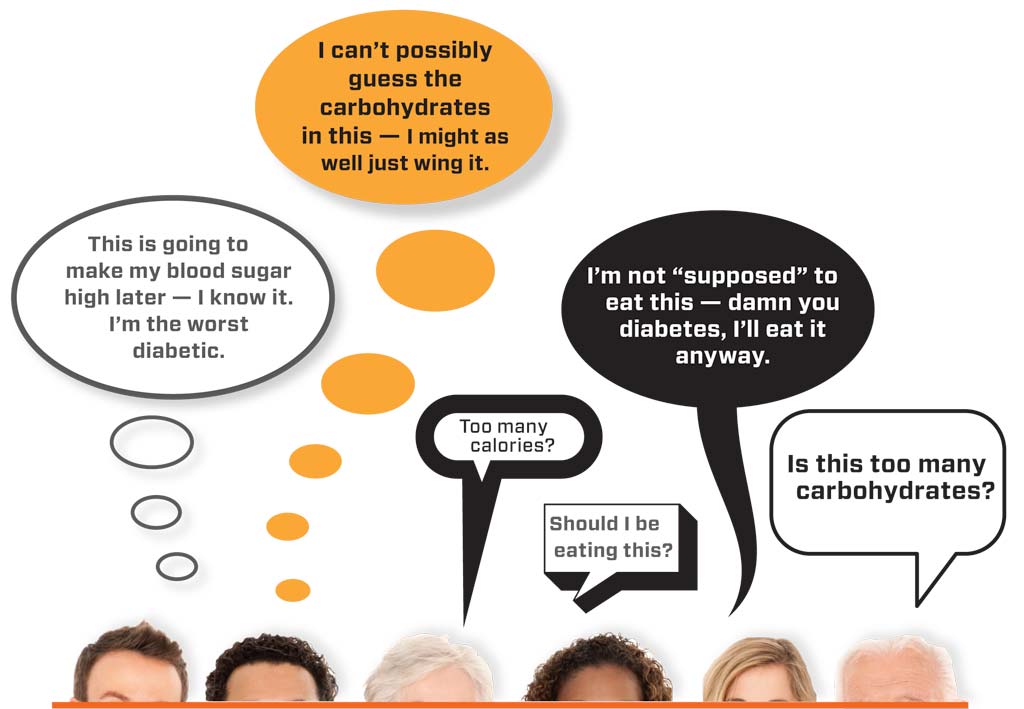Why Diabetes Increases Your Risk of Yeast Infections
Here is how and why women with diabetes are especially vulnerable to developing vaginal yeast infections; and what you can do about it

What is a yeast infection?
Also referred to as “vulvovaginal candidiasis,” a vaginal yeast infection is essentially an overgrowth of yeast, according to the Office of Women’s Health. While your vagina does need some yeast to maintain a healthy environment, too much yeast becomes very uncomfortable very quickly.
Yeast infections are technically “fungal infections” because yeast is a type of fungus. Again, it’s a good fungus when it’s present in healthy amounts. There is such a thing as a “bacterial” yeast infection but those are rare.
You may have heard of yeast infections by the name of “thrush” — which is the term used for the overgrowth of yeast in your mouth, tongue, and throat.
While this is primarily an issue for women, men with diabetes can also develop a yeast infection within their urinary tract.
Symptoms of a yeast infection
Yeast infections can be subtle at first but they will quickly become very uncomfortable and impossible to ignore if left untreated. It only takes a couple of days for an overgrowth of yeast to go from mild overgrowth to severe overgrowth.
Here are the most common signs and symptoms of a yeast infection from the Office of Women’s Health:
- Itching on the outside and inside of the vagina
- Burning and stinging outside and inside the vagina
- Creamy, white discharge (in the earlier stages)
- Clumpy, white discharge (as the infection worsens)
- Overall inflammation and redness of your labia and vagina
- Stinging and burning when you pee
- Stinging and burning during intercourse
The following symptoms indicate you should contact your doctor immediately:
- Yellow discharge
- Bloody discharge
- Strong-smelling odor
- Fever
- Vomiting
- Pain in your stomach or back
- Excessive urination
What causes a yeast infection?
Fortunately, yeast infections are very treatable, but in people with diabetes, they can become recurring if your blood sugars are persistently high.
Sugar feeds the growth of yeast.
When your blood sugar levels are high on a daily basis (generally above 250 mg/dL will do the trick), you’re excreting a lot of sugar through your urine. The presence of this sugar in your urine changes the chemical balance in your vagina and leads to an overgrowth of yeast.
Blood sugars persistently over 300 mg/dL (in those engaging in diabulimia, for example, or prior to your diagnosis) is almost a guarantee for recurring yeast infections.
Of course, yeast infections can develop in those with or without diabetes unrelated to your blood sugar levels, too. According to the Office of Women’s Health, other causes of yeast infections include:
- High blood sugar levels
- Severe stress
- Changes in hormone levels
- Cortisone injections
- Scented tampons
- Scented lotions, shaving creams, etc.
- Weakened immune system
- Antibiotics
- Birth-control
- Chemotherapy
- HIV/Aids treatments
- Anabolic steroids
- Douching products (you should never douche!)
- Excessive moisture in the vaginal area from damp underwear, menstrual pads, wet swimsuit, etc.
- Having sex with someone who has a yeast infection (especially between two women)
- Your sexual partner’s physical chemistry or semen (your body will likely adjust over time)
- Men can contract yeast with their penis from a woman, but this is rare.
As a person with diabetes, the combination of one of these factors along with elevated blood sugars can make you far more susceptible to developing a yeast infection. Some of these factors are out of our control, which means it’s essential that you work with your healthcare team to address the yeast overgrowth.
When diabetes medications cause yeast infections
There is one category of diabetes medications in particular that have been known to cause yeast infections if your blood sugars are persistently higher than normal or your diet is very high in carbohydrates.
“SGLT2 inhibitors” (or Sodium-glucose Cotransporter-2 Inhibitors) are also known as “gliflozins.” They help to lower your daily blood sugar levels by preventing your kidneys from absorbing excess glucose in the plasma in your blood, and instead, passing that sugar through your urine.
This excess sugar in your urine caused by SGLT2 inhibitors can stimulate the overgrowth of yeast.
Widely prescribed SGLT2 inhibitors include:
- Farxiga (dapagliflozin)
- Invokana (canagliflozin)
- Jardiance (empagliflozin)
All these SGLT2 medications share common side-effects of yeast infections, urinary tract infections, increased need to urinate, back pain, nausea, increased cholesterol levels.
These drugs can be very helpful in lowering blood sugar, reducing your insulin needs, and even helping you lose a little bit of weight — so the risk of yeast infections shouldn’t stop you from taking them.
However, if you are taking one of these drugs, there are a few things you should do to reduce your risk of yeast infections.
- Drink a lot of water every day — this gives your body adequate fluid to flush out the excessive sugar in your system.
- Reduce your carbohydrate intake — if you’re taking these drugs and still consuming more than 300+ grams of carbohydrate per day, you’ll likely struggle with yeast infections.
- Combine your SGLT2 with another diabetes medication to help reduce your blood sugar levels.
Treating a yeast infection when you have diabetes
Warning: if you purchase any type of yeast infection treatment product without addressing your persistently high blood sugar levels, you will continue to develop yeast infections.
A critical part of treating a yeast infection must include improving your blood sugar levels and/or your diet. Work with your healthcare team to get the help you need! Diabetes management is complicated — it’s okay to ask for help!
Over-the-counter treatment options
When it comes to over-the-counter anti-fungal infections, you’ll see a lot of options on the shelf. There are a few types, so if one didn’t work for you with quick relief of your symptoms, your body may respond better to another kind.
- Miconazole (Monistat 3, Monistat 5, Monistat 7, Micon 7)
- Tioconazole (Monistat 1, Vagistat 1)
- Butoconazole (Gynazole 1)
- Clotrimazole (Mycelex-G, Femcare, Gyne-Lotrimin)
- Nystatin (Mycostatin)
- Terconazole (Terazol 3, Terazol 7)
For example, if miconazole doesn’t relieve your symptoms within a couple of days, you may find tioconazole does — and vice versa.
Be Careful with ‘Itch Relief’ Products
There are “itch relief” products sold to help alleviate the symptoms but these will not treat the growth of yeast.
The following products should be used in conjunction with an anti-fungal treatment:
- AZO
- Vagisil (wipes or cream)
- Vagicaine
Prescription-strength treatment options
If over-the-counter options do not relieve your symptoms within a few days, contact your healthcare team immediately for a prescription-strength antifungal medication. One example is Fluconazole (Diflucan).
Preventing yeast infections
There are several steps and habits you can apply to your daily life to reduce your risk of developing a yeast infection. Most women will develop at least one or two yeast infections at some point in their life, but women with diabetes will likely experience more than just a few.
For example, just one week of stubborn high blood sugars along with a stressful life event can trigger than yeast overgrowth.
Here are a few things you can do to prevent yeast infections:
- Address persistently high blood sugar levels quickly
- Avoid long-term moisture in the vaginal area
- Wipe from front-to-back after going to the bathroom
- Do not hang out for long in a wet swimsuit or towel
- Avoid tight underwear
- Do not douche (ever!)
- Do not use “home-remedies” like apple cider or yogurt inside the vagina
- Avoid scented tampons
- Change your tampon brand if this is a possible factor
- Change your shaving cream brand if this is a possible factor
Yeast infections can be truly unbearable — take good care of your vaginal health with these daily habits.







